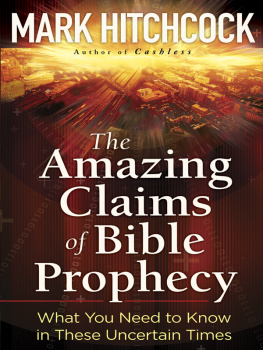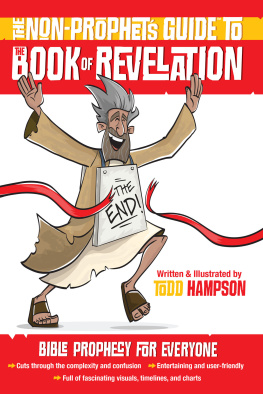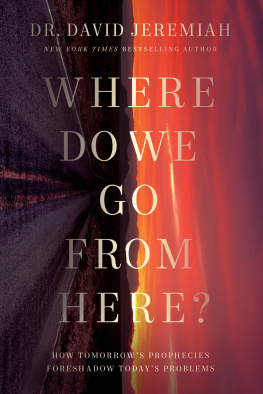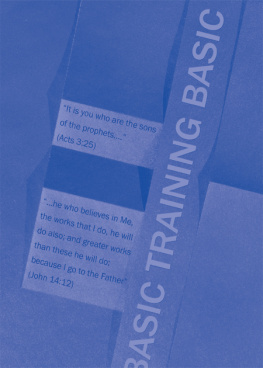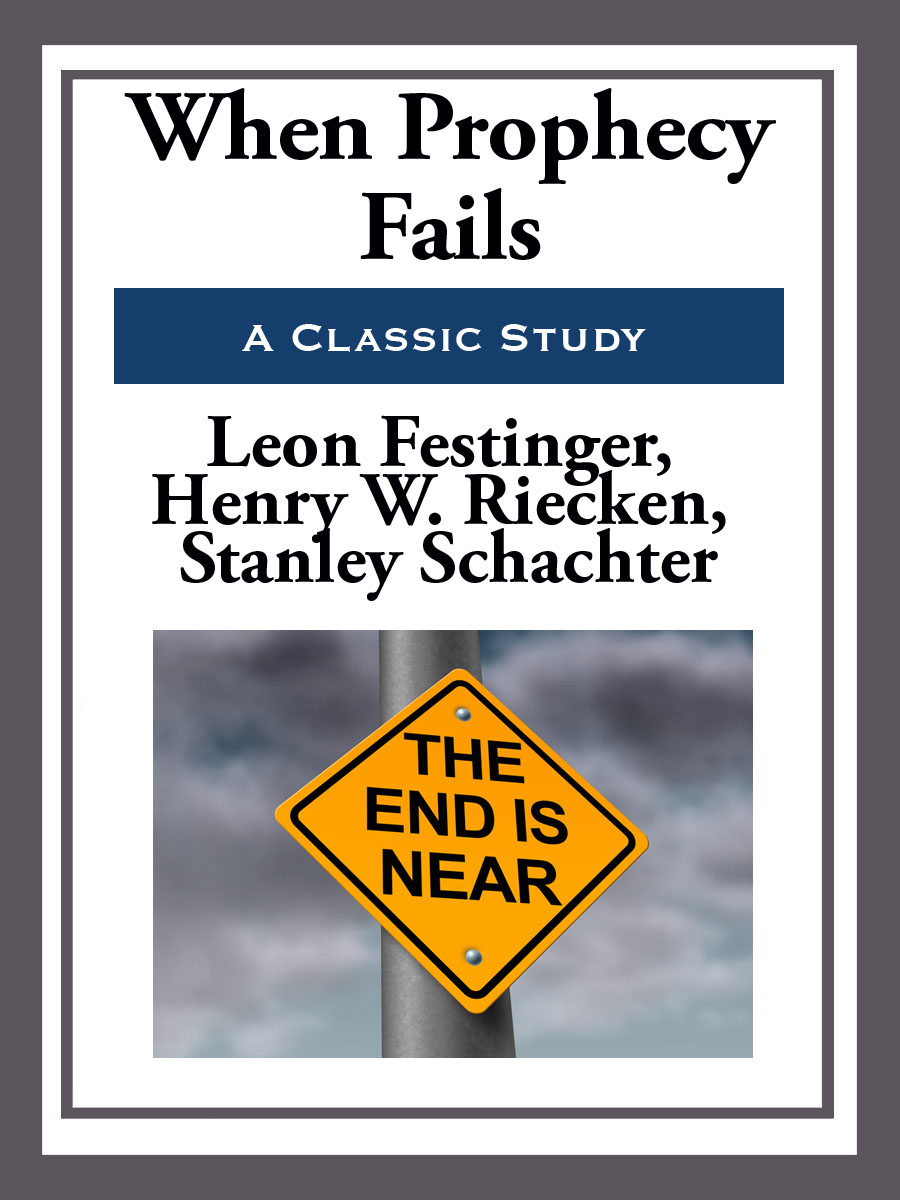Start Publishing LLC
Copyright 2012 by Start Publishing LLC
All rights reserved, including the right to reproduce this book or portions thereof in any form whatsoever.
First Start Publishing eBook edition October 2012
Start Publishing is a registered trademark of Start Publishing LLC
Manufactured in the United States of America
10 9 8 7 6 5 4 3 2 1
ISBN 978-1-62558-977-4
CHAPTER I
Unfulfilled Prophecies and Disappointed Messiahs
A man with a conviction is a hard man to change. Tell him you disagree and he turns away. Show him facts or figures and he questions your sources. Appeal to logic and he fails to see your point.
We have all experienced the futility of trying to change a strong conviction, especially if the convinced person has some investment in his belief. We are familiar with the variety of ingenious defenses with which people protect their convictions, managing to keep them unscathed through the most devastating attacks.
But mans resourcefulness goes beyond simply protecting a belief. Suppose an individual believes something with his whole heart; suppose further that he has a commitment to this belief, that he has taken irrevocable actions because of it; finally, suppose that he is presented with evidence, unequivocal and undeniable evidence, that his belief is wrong: what will happen? The individual will frequently emerge, not only unshaken, but even more convinced of the truth of his beliefs than ever before. Indeed, he may even show a new fervor about convincing and converting other people to his view.
How and why does such a response to contradictory evidence come about? This is the question on which this book focuses. We hope that, by the end of the volume, we will have provided an adequate answer to the question, an answer documented by data.
Let us begin by stating the conditions under which we would expect to observe increased fervor following the disconfirmation of a belief. There are five such conditions.
1. A belief must be held with deep conviction and it must have some relevance to action, that is, to what the believer does or how he behaves.
2. The person holding the belief must have committed himself to it; that is, for the sake of his belief, he must have taken some important action that is difficult to undo. In general, the more important such actions are, and the more difficult they are to undo, the greater is the individuals commitment to the belief.
3. The belief must be sufficiently specific and sufficiently concerned with the real world so that events may unequivocally refute the belief.
4. Such undeniable disconfirmatory evidence must occur and must be recognized by the individual holding the belief.
The first two of these conditions specify the circumstances that will make the belief resistant to change. The third and fourth conditions together, on the other hand, point to factors that would exert powerful pressure on a believer to discard his belief. It is, of course, possible that an individual, even though deeply convinced of a belief, may discard it in the face of unequivocal disconfirmation. We must, therefore, state a fifth condition specifying the circumstances under which the belief will be discarded and those under which it will be maintained with new fervor.
5. The individual believer must have social support. It is unlikely that one isolated believer could withstand the kind of dis-confirming evidence we have specified. If, however, the believer is a member of a group of convinced persons who can support one another, we would expect the belief to be maintained and the believers to attempt to proselyte or to persuade nonmembers that the belief is correct.
These five conditions specify the circumstances under which increased proselyting would be expected to follow disconfirmation. Given this set of hypotheses, our immediate concern is to locate data that will allow a test of the prediction of increased proselyting. Fortuntely, there have been throughout history recurring instances of social movements which do satisfy the conditions adequately. These are the millennial or messianic movements, a contemporary instance of which we shall be examining in detail in the main part of this volume. Let us see just how such movements do satisfy the five conditions we have specified.
Typically, millennial or messianic movements are organized around the prediction of some future events. Our conditions are satisfied, however, only by those movements that specify a date or an interval of time within which the predicted events will occur as well as detailing exactly what is to happen. Sometimes the predicted event is the second coming of Christ and the beginning of Christs reign on earth; sometimes it is the destruction of the world through a cataclysm (usually with some select group slated for rescue from the disaster); or sometimes the prediction is concerned with particular occurrences that the Messiah or a miracle worker will bring about. Whatever the event predicted, the fact that its nature and the time of its happening are specified satisfies the third point on our list of conditions.
The second condition specifies strong behavioral commitment to the belief. This usually follows almost as a consequence of the situation. If one really believes a prediction (the first condition), for example, that on a given date the world will be destroyed by fire, with sinners being destroyed and the good being saved, one does things about it and makes certain preparations as a matter of course. These actions may range all the way from simple public declarations to the neglect of worldly things and the disposal of earthly possessions. Through such actions and through the mocking and scoffing of nonbelievers there is usually established a heavy commitment on the part of believers. What they do by way of preparation is difficult to undo, and the jeering of non-believers simply makes it far more difficult for the adherents to withdraw from the movement and admit that they were wrong.
Our fourth specification has invariably been provided. The predicted events have not occurred. There is usually no mistaking the fact that they did not occur and the believers know that. In other words, the unequivocal disconfirmation does materialize and makes its impact on the believers.
Finally, our fifth condition is ordinarily satisfied such movements do attract adherents and disciples, sometimes only a handful, occasionally hundreds of thousands. The reasons why people join such movements are outside the scope of our present discussion, but the fact remains that there are usually one or more groups of believers who can support one another.
History has recorded many such movements. Some are scarcely more than mentioned, while others are extensively described, although sometimes the aspects of a movement that concern us most may be sketchily recounted. A number of historical accounts, however, are complete enough to provide an introductory and exploratory answer to our central question. From these we have chosen several relatively clear examples of the phenomena under scrutiny in an endeavor simply to show what has often happened in movements that made a prediction about the future and then saw it disconfirmed. We shall discuss these historical examples before presenting the data from our case study of a modern movement.
Ever since the crucifixion of Jesus, many Christians have hoped for the second coming of Christ, and movements predicting specific dates for this event have not been rare. But most of the very early ones were not recorded in such a fashion that we can be sure of the reactions of believers to the disconfirmations they may have experienced. Occasionally historians make passing reference to such reactions as does Hughes in his description of the Montanists:


